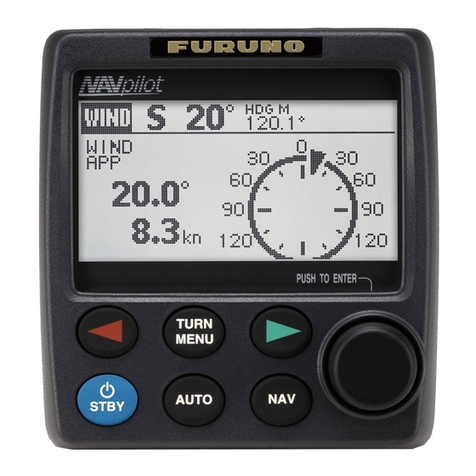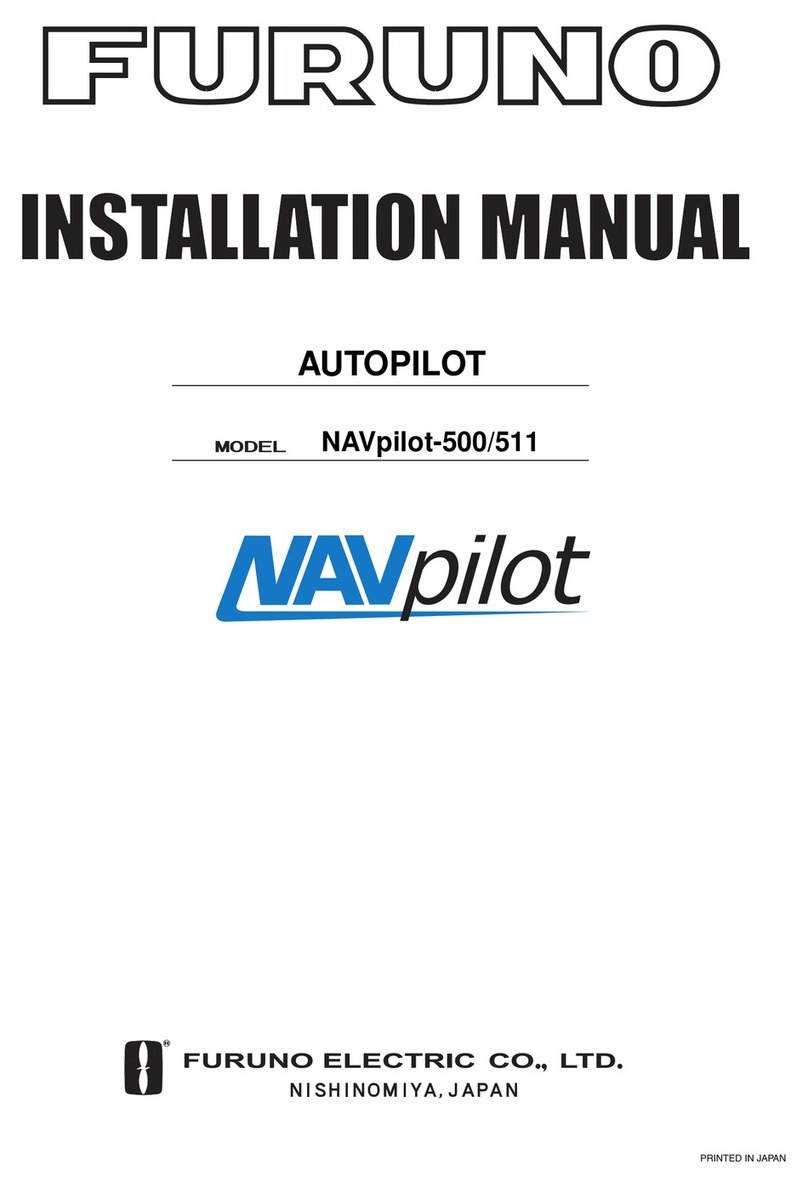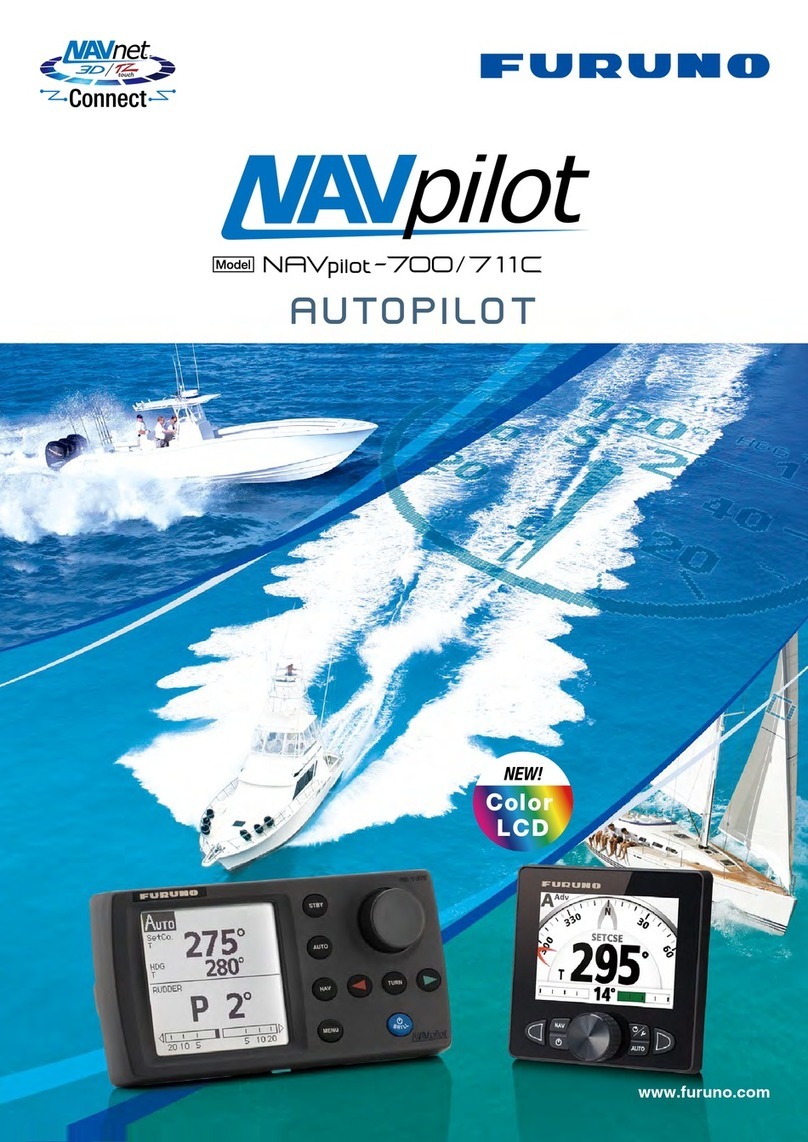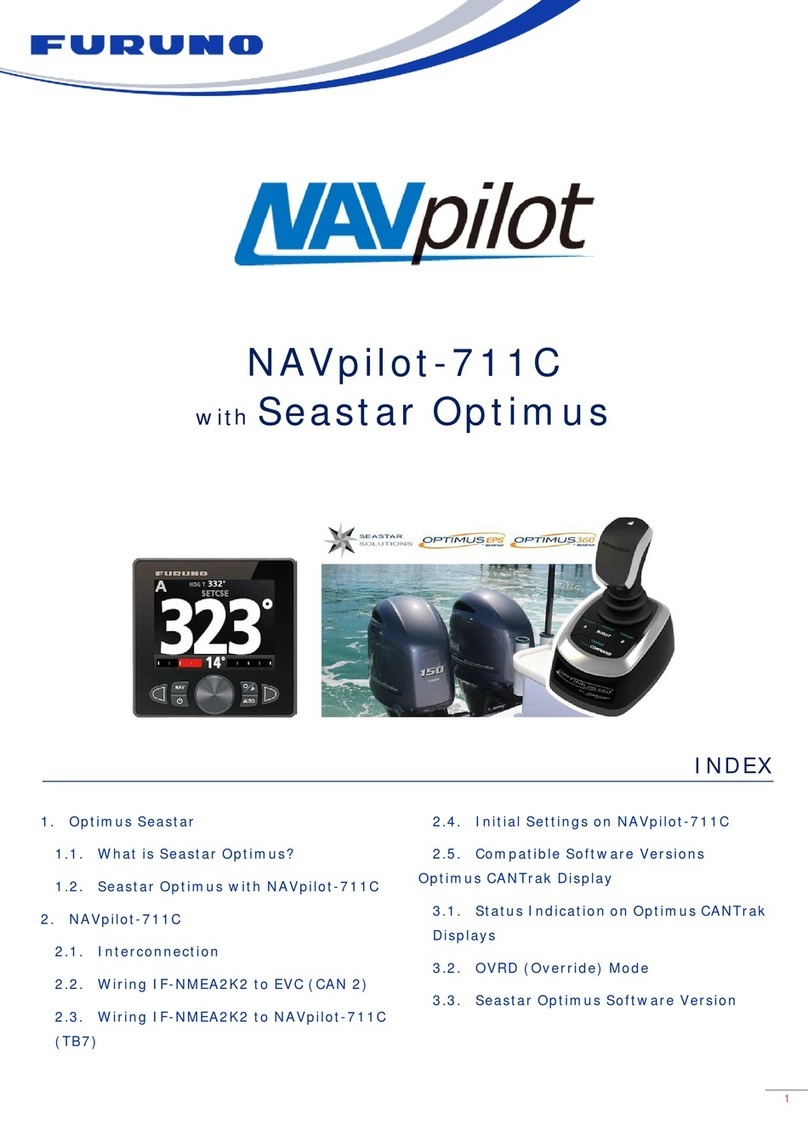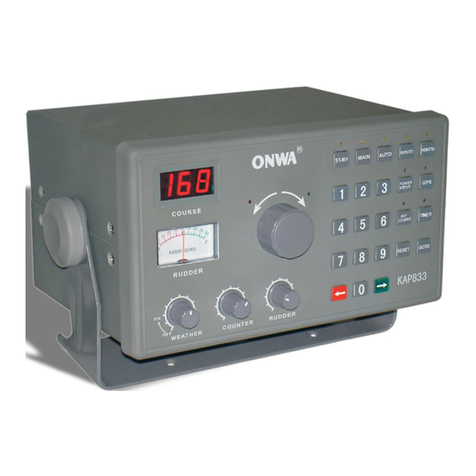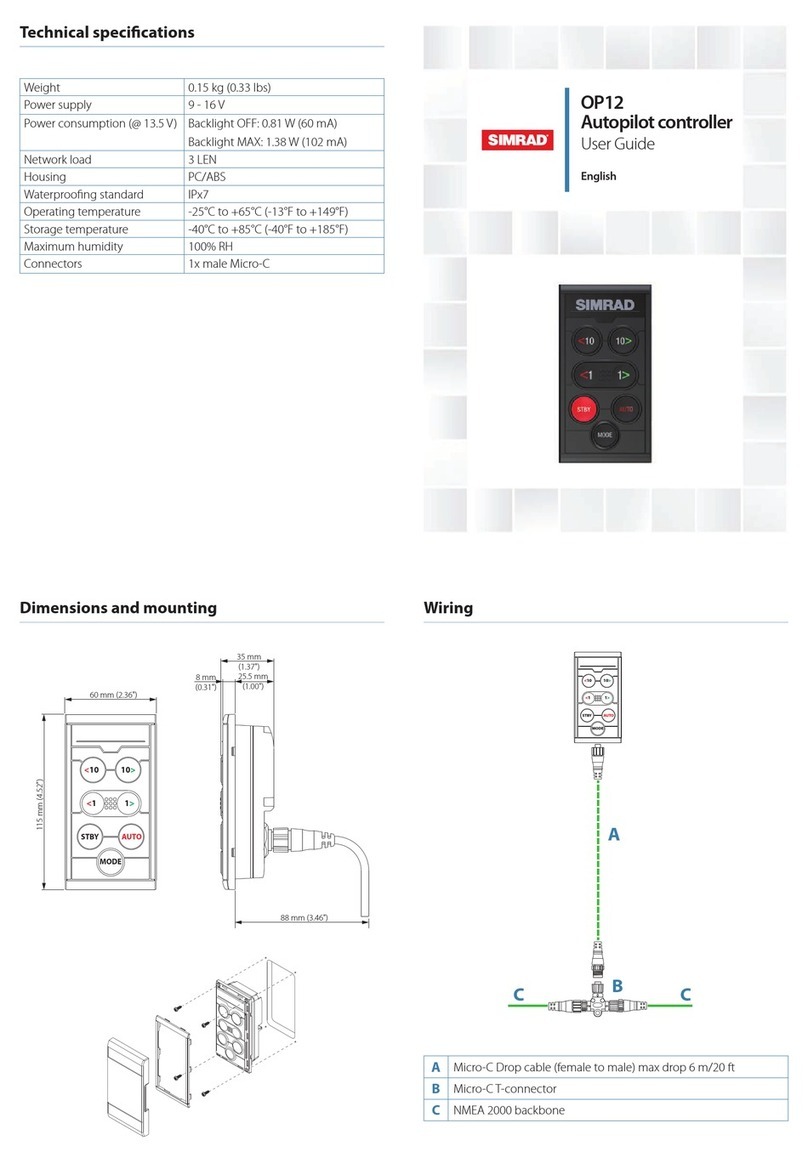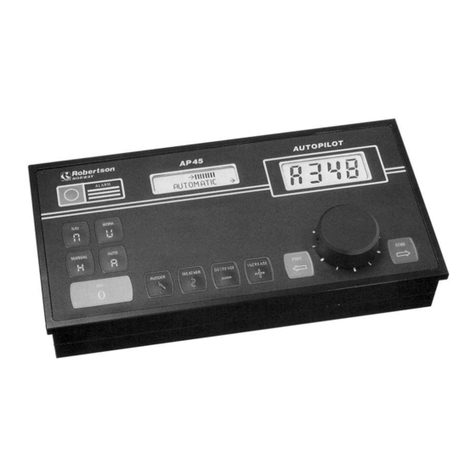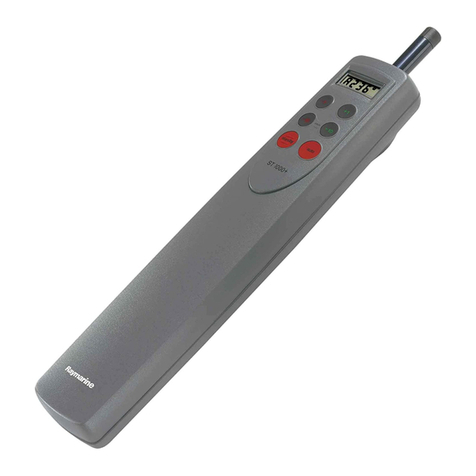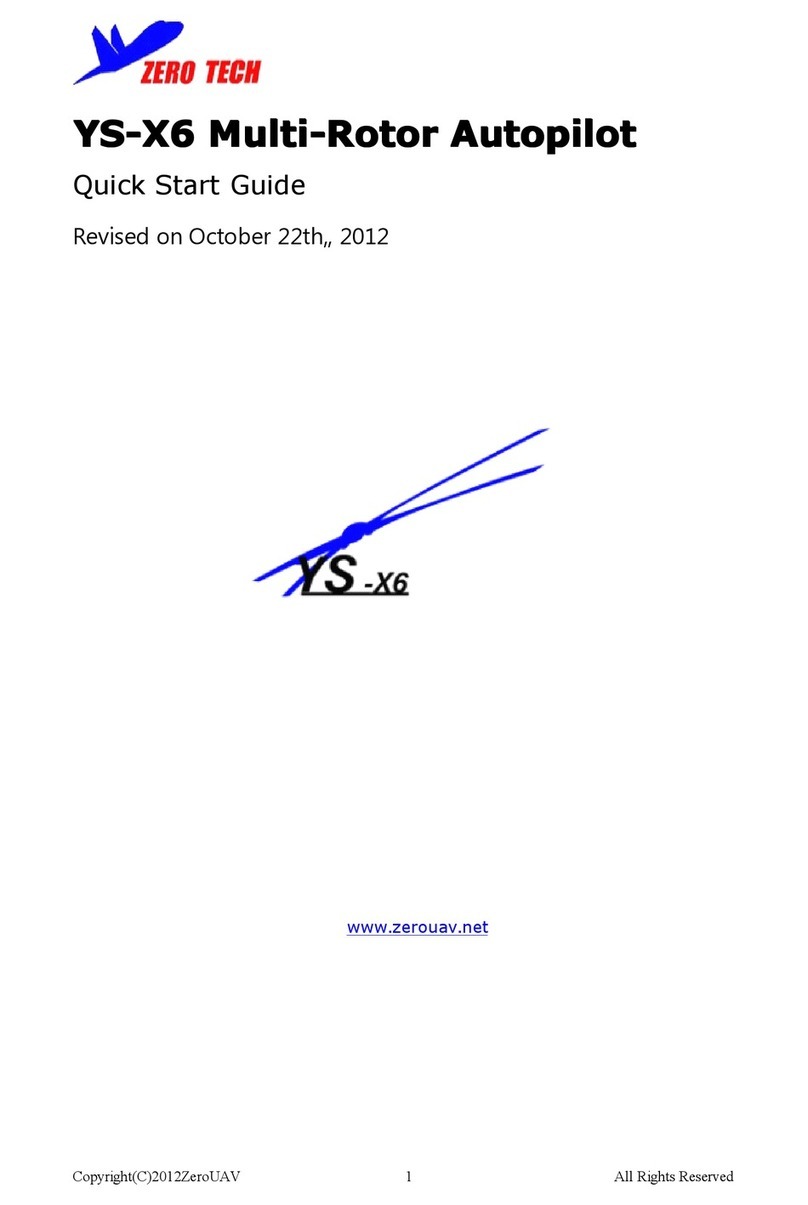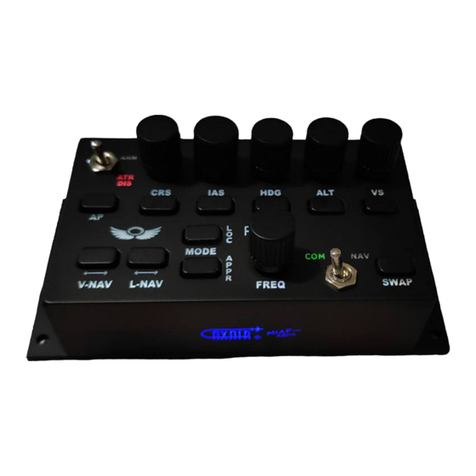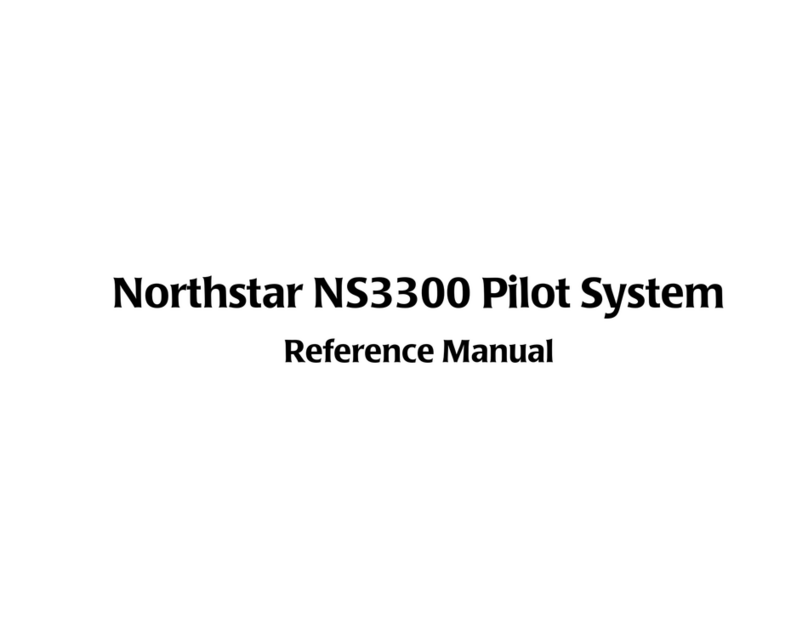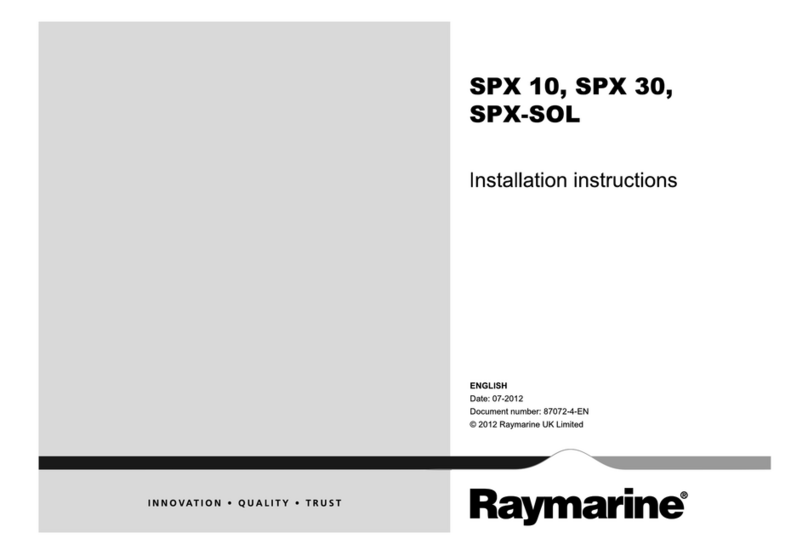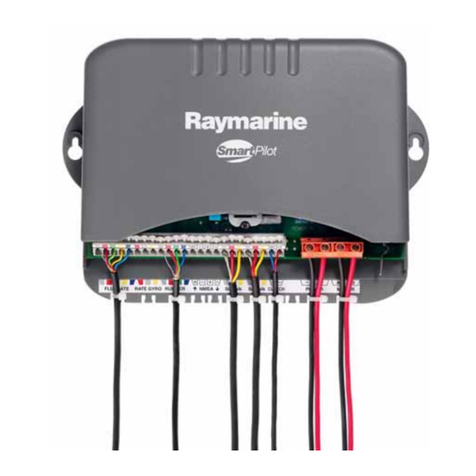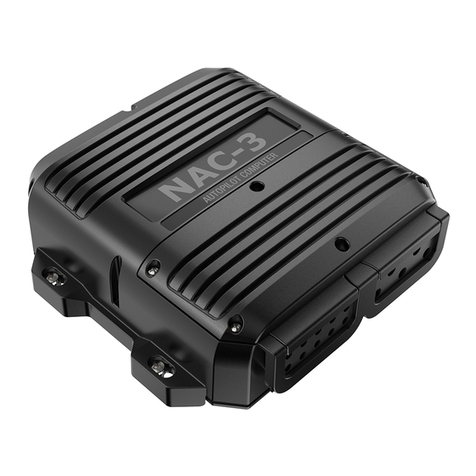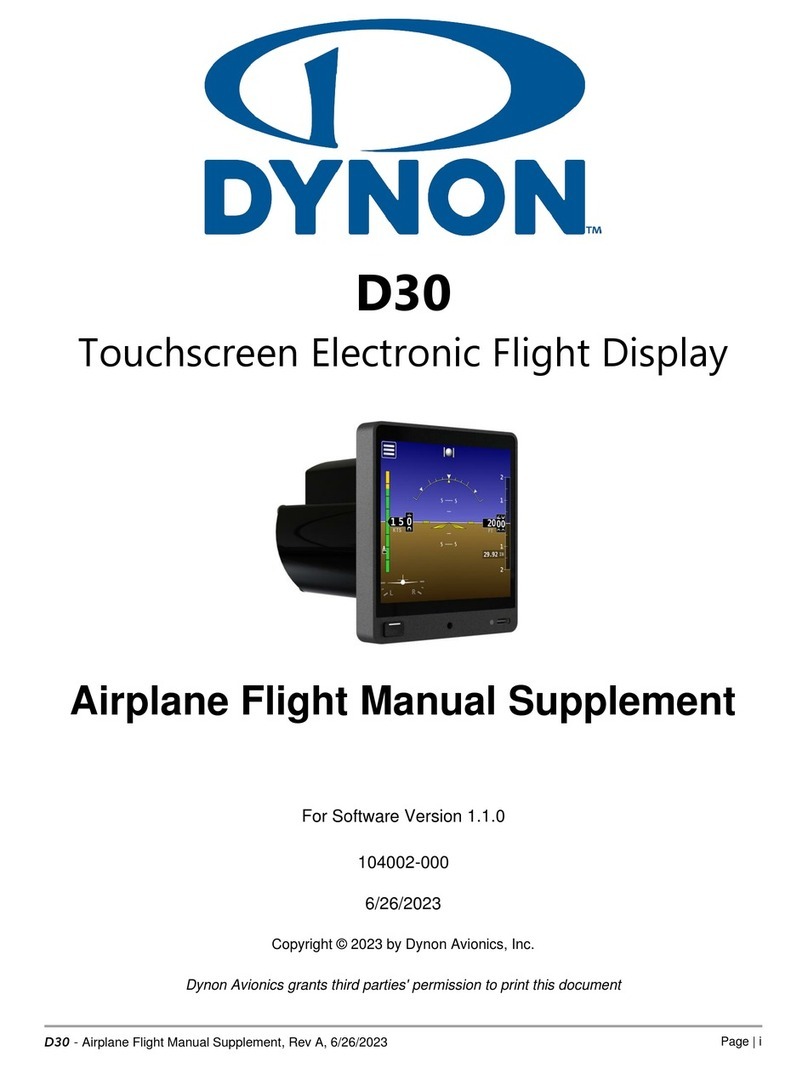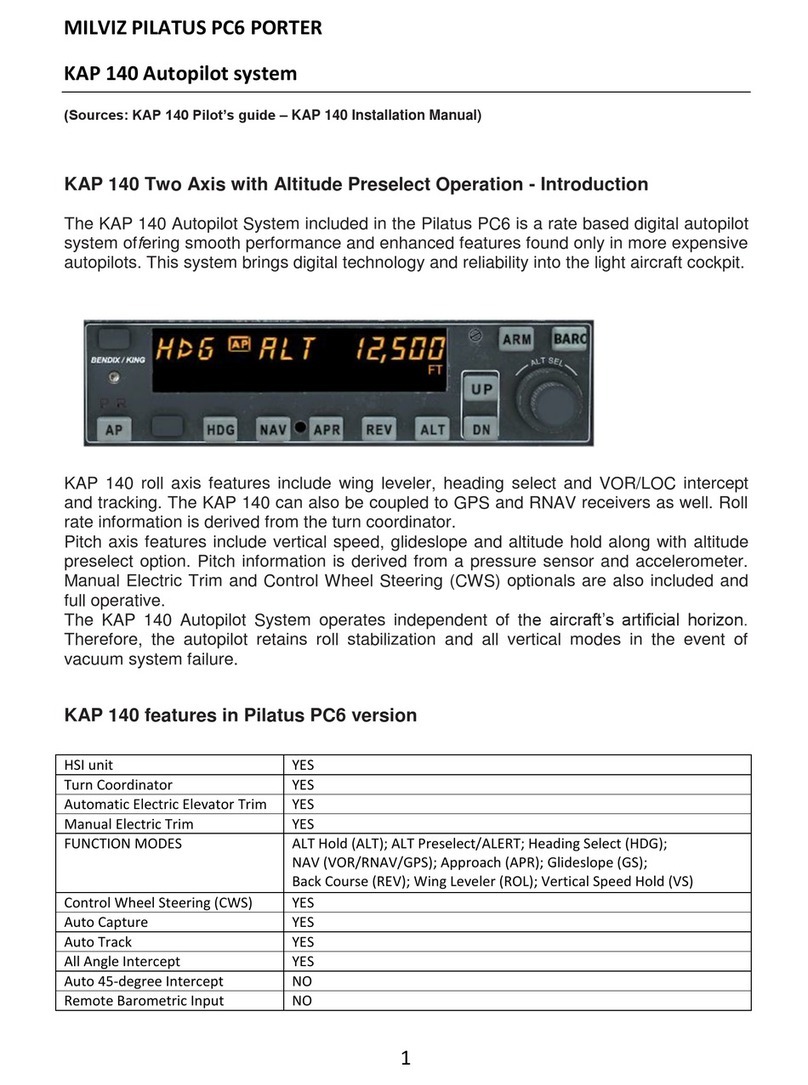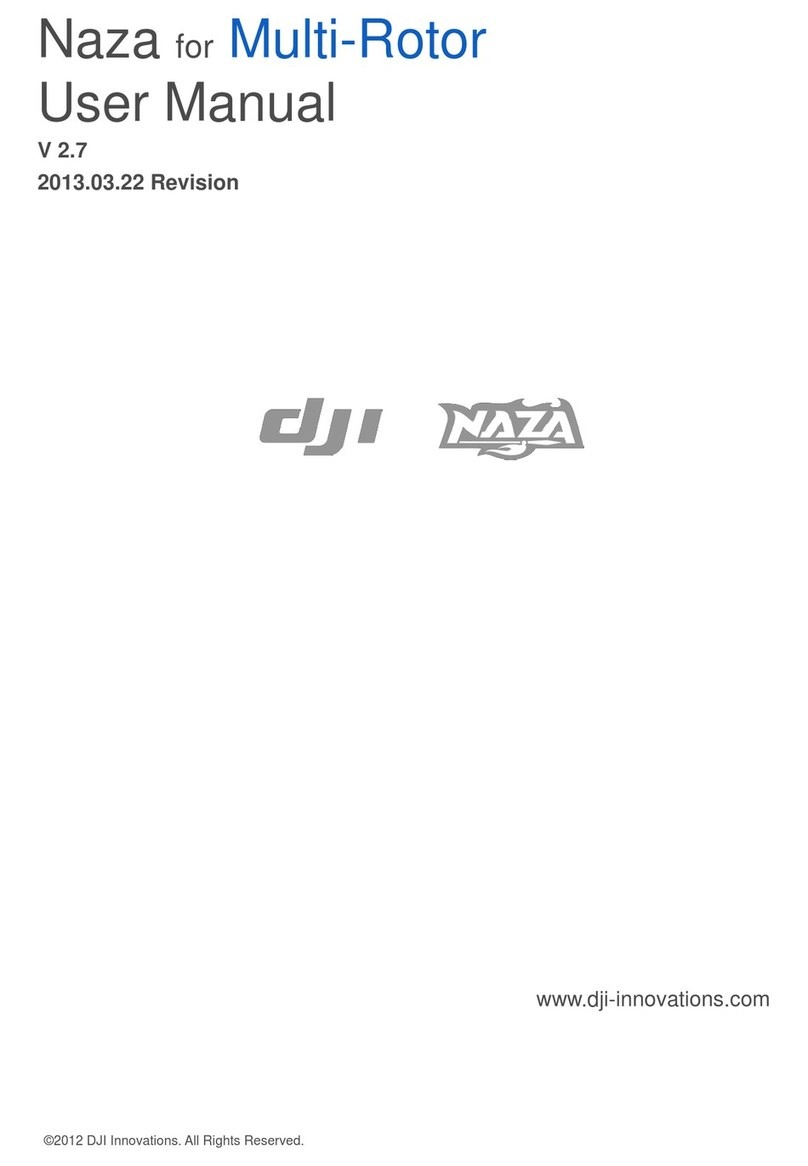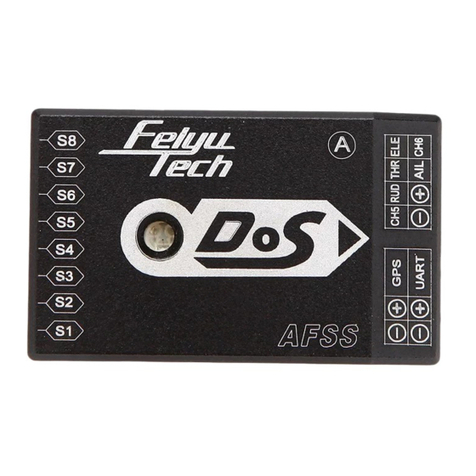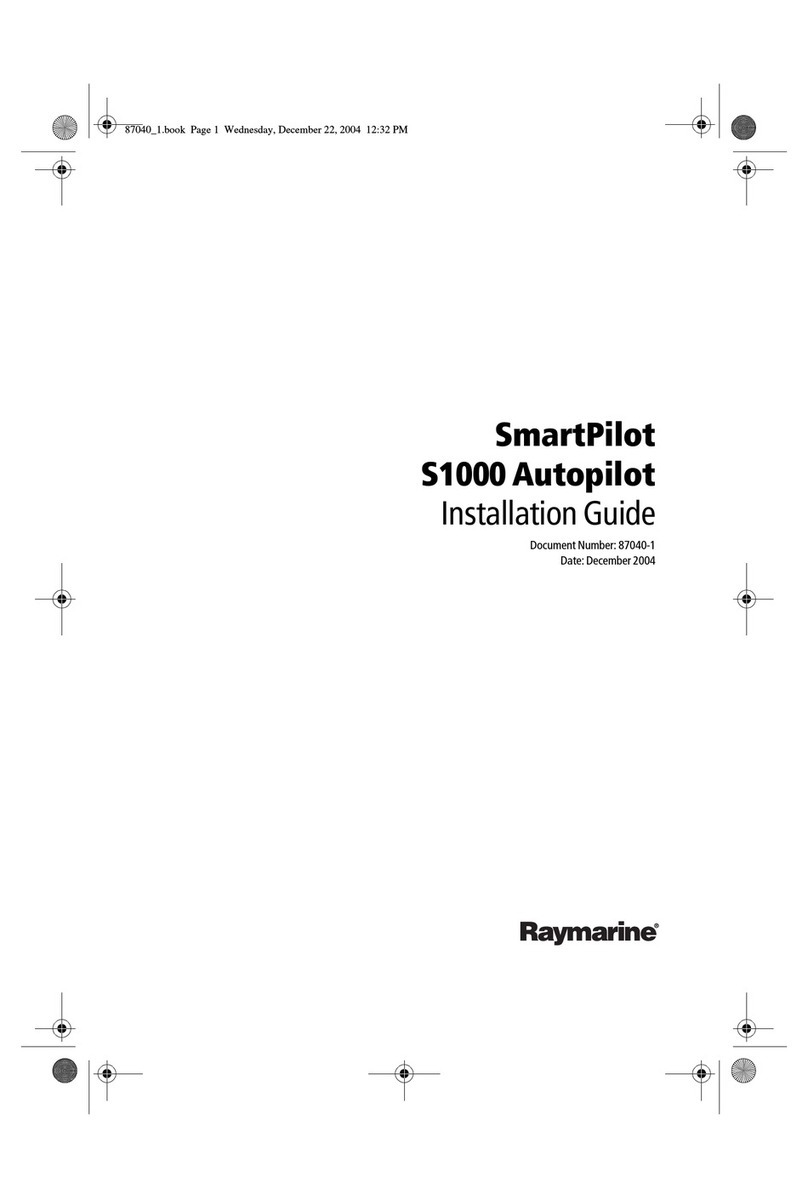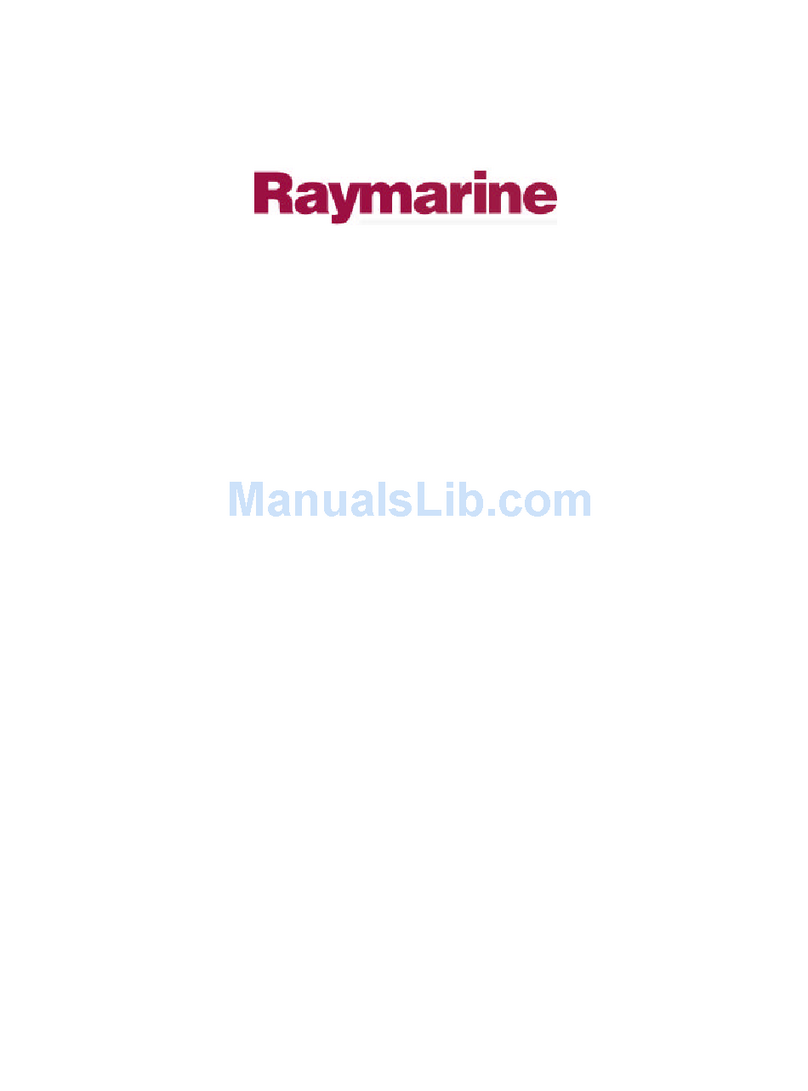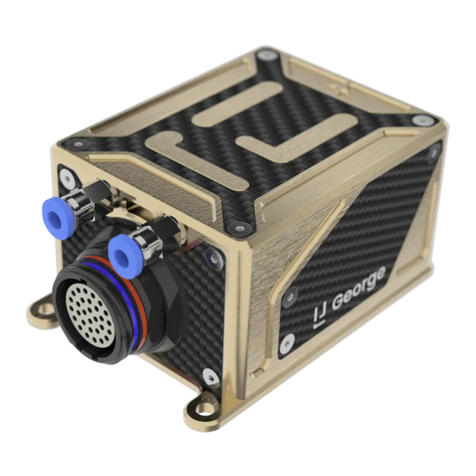TABLE OF CONTENTS
iv
2.8 REMOTE Mode........................................................................................................ 2-20
2.8.1 Dial-type remote controller (FAP-5551, FAP-5552) ..................................... 2-20
2.8.2 Button-type remote controller (FAP-6211, FAP-6212), Dodge-type remote
controller (FAP-6231, FAP-6232), Lever-type remote controller (FAP-6221,
FAP-6222).................................................................................................... 2-21
2.9 DODGE Mode .......................................................................................................... 2-23
2.9.1 How to dodge in the AUTO and NAV modes ...............................................2-23
2.9.2 How to FU dodge in the STBY mode ........................................................... 2-24
2.9.3 How to NFU dodge in the STBY mode ........................................................ 2-24
2.10 WIND Mode (for sailboats)....................................................................................... 2-25
2.10.1 How to get the WIND mode ......................................................................... 2-25
2.10.2 Wind angle mode ......................................................................................... 2-26
2.10.3 TACK mode.................................................................................................. 2-27
2.10.4 Tacking in WIND mode (WIND TACK)......................................................... 2-28
2.11 Safe Helm Mode ...................................................................................................... 2-32
2.12 Power Assist Mode .................................................................................................. 2-34
3. ALARMS ................................................................................................................3-1
3.1 ALARM Menu............................................................................................................. 3-1
3.2 Alarm Buzzer.............................................................................................................. 3-2
3.3 Buzzer Interval ........................................................................................................... 3-2
3.4 Watch Alarm............................................................................................................... 3-3
3.5 Deviation Alarm.......................................................................................................... 3-3
3.6 XTE Alarm.................................................................................................................. 3-4
3.7 Arrival Alarm............................................................................................................... 3-5
3.8 Speed Alarm .............................................................................................................. 3-5
3.9 Depth Alarm ............................................................................................................... 3-6
3.10 Water Temperature Alarm.......................................................................................... 3-6
3.11 Trip Distance Alarm, Trip Distance Reset .................................................................. 3-7
3.11.1 How to set the log trip alarm .......................................................................... 3-7
3.11.2 How to reset the trip distance......................................................................... 3-7
3.12 Wind Alarms (for sailboats) ........................................................................................ 3-8
3.12.1 Heading change alarm................................................................................... 3-8
3.12.2 Wind deviation alarm...................................................................................... 3-9
3.12.3 True wind speed alarm................................................................................... 3-9
3.12.4 Apparent wind speed alarm ........................................................................... 3-9
3.13 Alarm Log................................................................................................................. 3-10
4. HOW TO CUSTOMIZE YOUR NAVPILOT ............................................................4-1
4.1 Parameter Setup (PARAMETER SETUP Menu) ....................................................... 4-1
4.1.1 Sea state ........................................................................................................ 4-2
4.1.2 Trim gain ........................................................................................................ 4-5
4.1.3 Speed calculation........................................................................................... 4-6
4.2 Net Towing................................................................................................................. 4-6
4.3 Course After Operation of a Remote Controller ......................................................... 4-7
4.4 Nav Data Source........................................................................................................ 4-7
4.5 NavNet vx2 Synchronization...................................................................................... 4-8
4.6 SYSTEM SETUP Menu ............................................................................................. 4-9
4.7 Menu Shortcuts........................................................................................................ 4-11
4.7.1 How to create a menu shortcut .................................................................... 4-11
4.7.2 How to delete a menu shortcut .................................................................... 4-11



